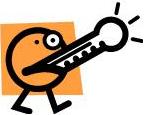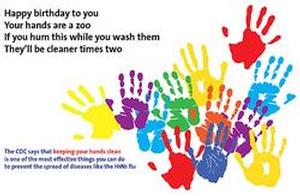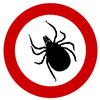Health Topics
HEALTH TOPICS
-
Read some helpful information to determine if you are too sick for school:
If your child gets sick, it is often most appropriate to keep him/her home from school. A child who is sick will not be able to perform well in school and is likely to spread the illness to other children and staff. Please make arrangements for childcare ahead of time so you will not be caught without a place for your child to stay if he/she is ill.
Our school procedure is to have your child stay out of school for the following conditions:1. Fever in the past 24 hours
2. Vomiting in the past 24 hours
3. Diarrhea in the past 24 hours
4. Chills
5. Sore throat
6. Strep Throat (must have been taking an antibiotic for at least 24 hours before returning to school).
7. Bad cold, with a very runny nose or bad cough, especially if it has kept the child awake at night.If your child becomes ill at school and the teacher or school nurse feel the child is too sick to benefit from school or is contagious to other children, you will be called to come and take him/her home from school. It is essential that your child’s teacher have a phone number where you can be contacted during the day and an emergency number in the event you cannot be reached. Please be sure that arrangements can be made to transport your child home from school and that childcare is available in case of illness. If your daytime or emergency phone number change during the year, please notify your child’s nurse immediately.
These guidelines are meant to serve the best interests of all the children in our program. The following link will take you to more information on how to determine if your child is too sick for school:

Is Your Child Too Sick for School?
Is it a cold or is it the flu?
-
The Flu - A Guide for Parents
For information on the flu and how to protect your child from getting it, CLICK HERE for a guide from the NYS Department of Health and CLICK HERE for a guide from the Centers for Disease Control. -
-
The Facts of Lice: How to Detect It, Treat It, Prevent It
Contrary to popular belief, the school environment sees a higher incidence of lice infestation in the winter months. This is because hats, scarves and jackets come in contact with each other, allowing the louse to move from child to child.Now it’s time for a test. See if you can answer these true-or-false questions:
1. Lice prefer a dirty head to a clean head of hair.
2. Lice can jump and fly.
3. Family pets can transmit lice.
4. Lice spread disease.
5. Lice shampoo is all the hair treatment that is necessary to get rid of lice.Knowledge is your strongest suit of armor in preventing your child from bringing home lice this season.
For starters, homes don’t get head lice; people do. The parasite lives off human blood. In fact, the louse will only survive about 24 hours OFF a human host before it starves to death. The adult louse is about the size of a sesame seed and has six legs with claws. It does not have hind legs to jump, nor does it have wings to fly. The louse does crawl very quickly and can move from one head to another (if the heads are touching) in seconds.
Incidentally, all of the above answers are false.
No matter how much you clean your house or what neighborhood you live in, your child will bring home lice if it finds a way to his/her head. Like humans, lice prefer a clean environment. A clean head of hair is lice paradise! Lice are not dangerous, nor do they cause disease. They are, however, highly contagious and annoying. Prevention is key.
Kids and teens are most prone to lice infestation because they like to share their things. Teach your children not to share brushes, combs, hair accessories, hats, headsets, stuffed toys, or towels. Examine your child’s heads periodically, especially after complaints of an itchy head or neck. If there has been an exposure, check your child’s head even if the symptoms are not apparent.
Treatment strategies include:
• Get all of the adult lice out of the hair. Speak with your medical provider regarding products designed to kill lice and make it easier to comb them out of the hair.
• Get all of the nits out of the hair. Nits are small white lice eggs, like a grain of sand, that are attached with a super-glue substance to the hair shaft. Shampoo does not remove the nits. The nits must be picked out of the hair, one by one and meticulously, or you’ll find new lice hatching in a few days. Nit combs are popular because they are fine-toothed and strong in removing the eggs. Use the bulk of your time on lice and nit removal.• Get lice and nits off clothing, sheets and other items. Clothes and bed linens that have touched the head should be washed in hot water or placed in a hot dryer for 30 minutes. (The effectiveness of sprays is controversial.) Vacuum furniture and rugs. Some still advocate bagging up things that cannot be washed in an airtight bag for ten days. Others argue that evidence does not support the effectiveness of this intervention and that the time is better spent with hands-on lice and nit removal.
For additional information, go to:
www.kidshealth.org
Centers for Disease Control
www.cdc.gov.
-
What to Do When Your Child Comes Home with Lice
How does the Centers for Disease Control (CDC) advise schools to manage lice?
http://www.cdc.gov/parasites/lice/head/schools.htmlAmerican Academy of Pediatrics:
National Association of School Nurses Position Statement about lice management
Click here -
-
Pertussis is a bacterial infection which is spread by airborne droplet during coughs and sneezes. It generally begins as a mild upper respiratory infection with symptoms including sneezing, low-grade fever and a mild cough. Within generally two weeks the cough becomes more severe and is characterized by fits of coughing followed by a high pitched whoop. Pertussis can occur at any age but is most common in children under five. Treatment with antibiotics can shorten the contagious period.
Measures to prevent the spread of pertussis includes covering your mouth and nose with coughs and sneezes, followed by hand washing. Wash your hand after blowing or wiping your nose. Wash your hand before you touch your own hand or nose. Stay home when you feel ill.
Your physician would be happy to address any concerns that you might have about medical issues with your children. Excellent web references for pertussis can be found at WebMD,KidsHealth or on the American Academy of Pediatrics site.There are measures you can take to prevent the spread of pertussis (whooping cough) and respiratory infections in general. The focus, as with all communicable diseases, is not WHO has the illness but on what you can do to be alert to the signs and symptoms, and to prevent contracting pertussis.
-
-
-

 Additional settings for Safari Browser.
Additional settings for Safari Browser.



